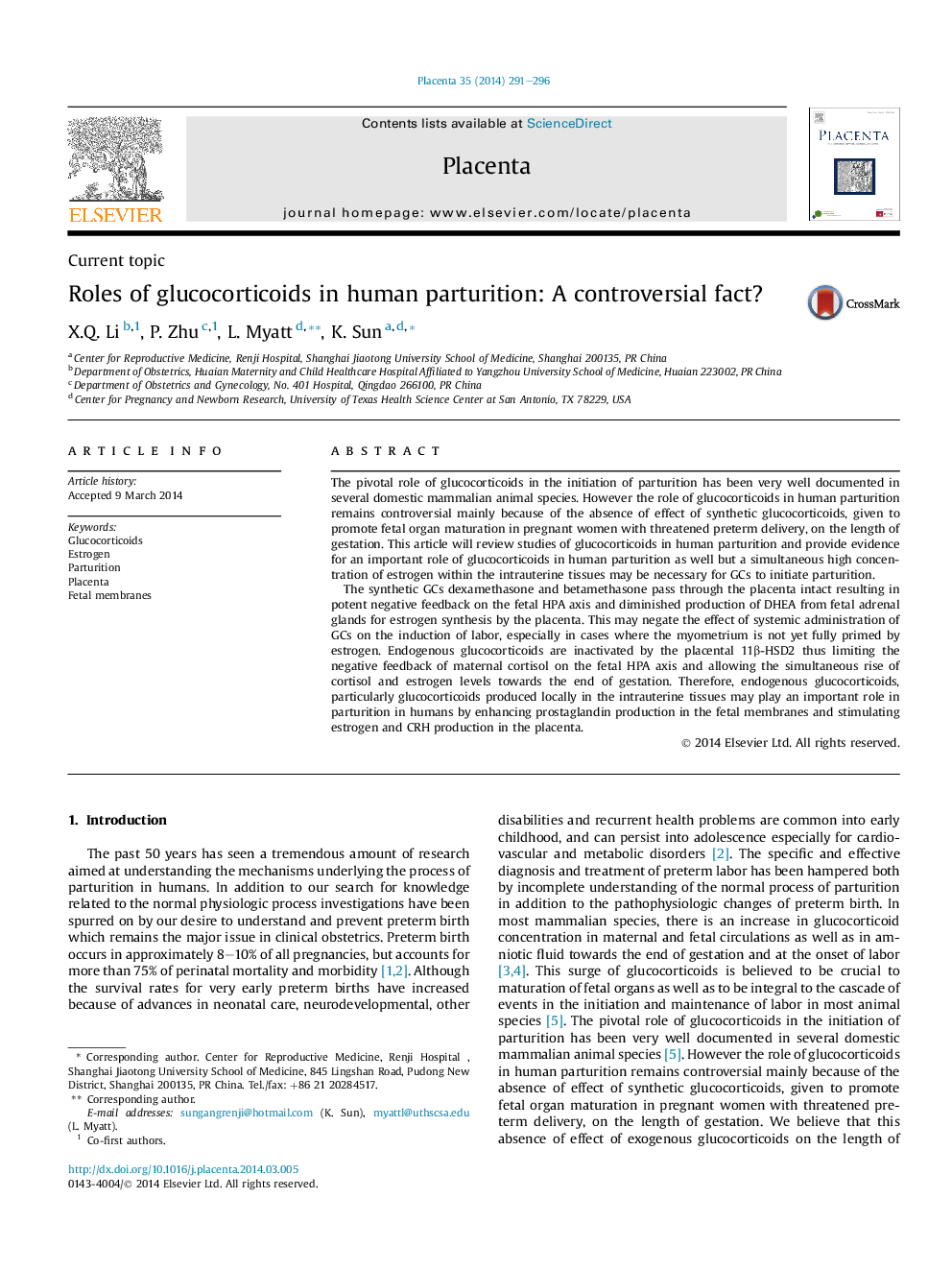| کد مقاله | کد نشریه | سال انتشار | مقاله انگلیسی | نسخه تمام متن |
|---|---|---|---|---|
| 2788820 | 1154451 | 2014 | 6 صفحه PDF | دانلود رایگان |
The pivotal role of glucocorticoids in the initiation of parturition has been very well documented in several domestic mammalian animal species. However the role of glucocorticoids in human parturition remains controversial mainly because of the absence of effect of synthetic glucocorticoids, given to promote fetal organ maturation in pregnant women with threatened preterm delivery, on the length of gestation. This article will review studies of glucocorticoids in human parturition and provide evidence for an important role of glucocorticoids in human parturition as well but a simultaneous high concentration of estrogen within the intrauterine tissues may be necessary for GCs to initiate parturition.The synthetic GCs dexamethasone and betamethasone pass through the placenta intact resulting in potent negative feedback on the fetal HPA axis and diminished production of DHEA from fetal adrenal glands for estrogen synthesis by the placenta. This may negate the effect of systemic administration of GCs on the induction of labor, especially in cases where the myometrium is not yet fully primed by estrogen. Endogenous glucocorticoids are inactivated by the placental 11β-HSD2 thus limiting the negative feedback of maternal cortisol on the fetal HPA axis and allowing the simultaneous rise of cortisol and estrogen levels towards the end of gestation. Therefore, endogenous glucocorticoids, particularly glucocorticoids produced locally in the intrauterine tissues may play an important role in parturition in humans by enhancing prostaglandin production in the fetal membranes and stimulating estrogen and CRH production in the placenta.
Journal: Placenta - Volume 35, Issue 5, May 2014, Pages 291–296
